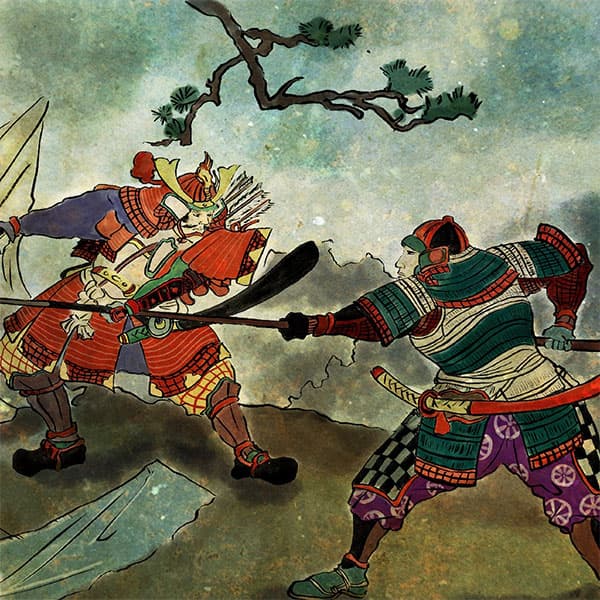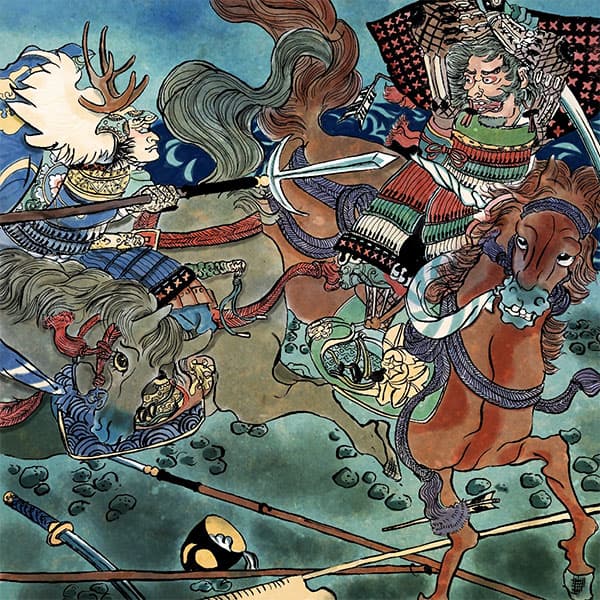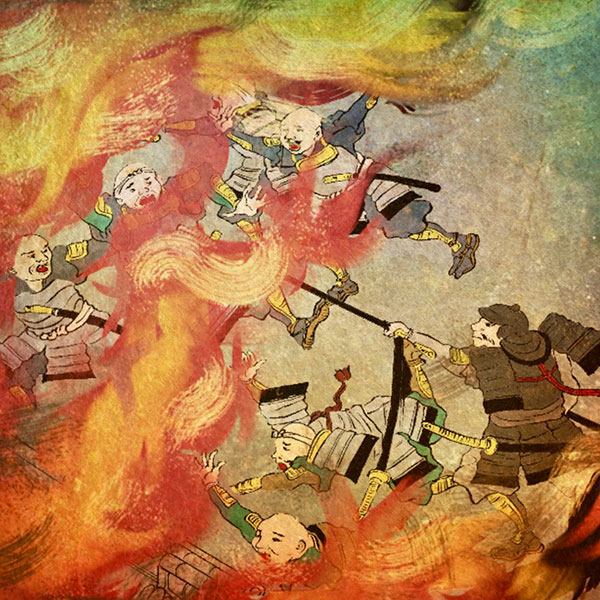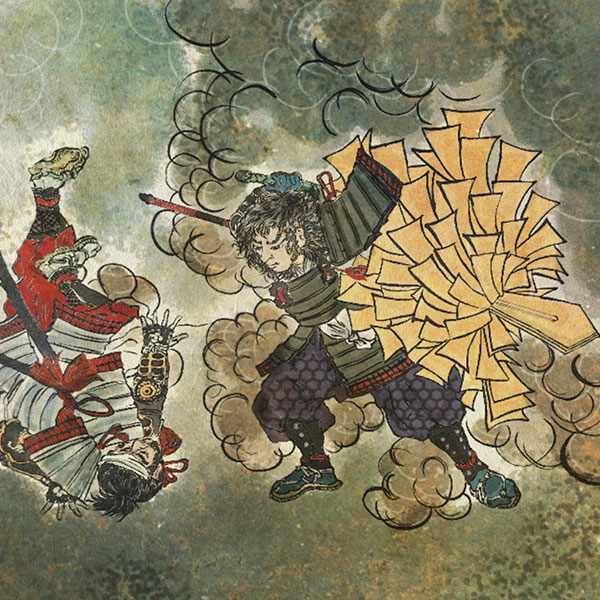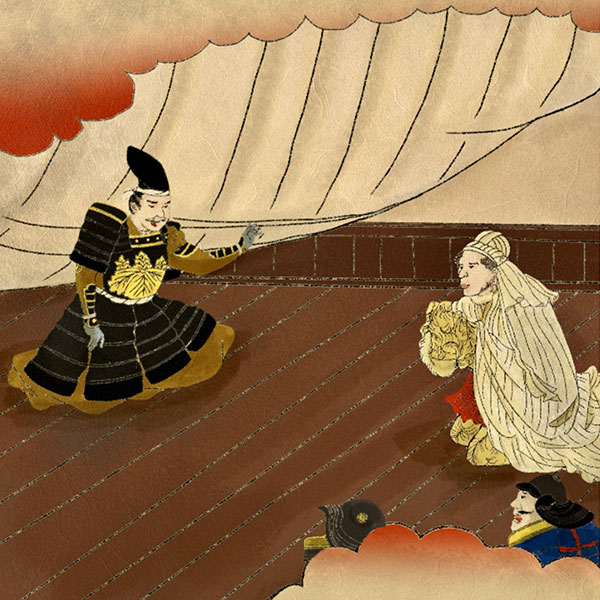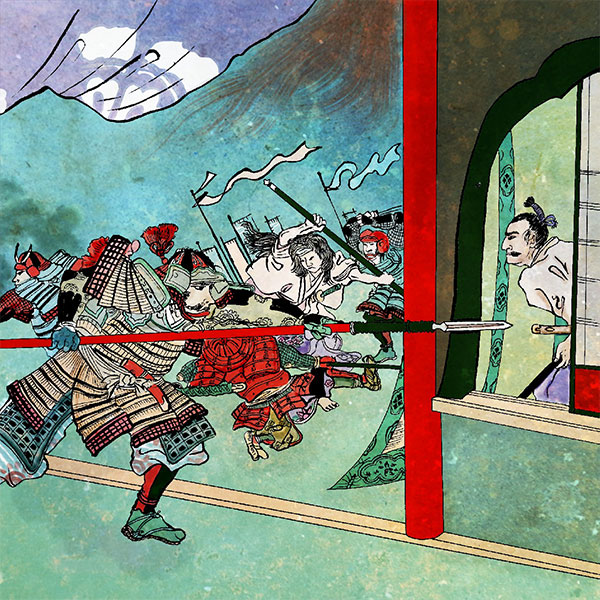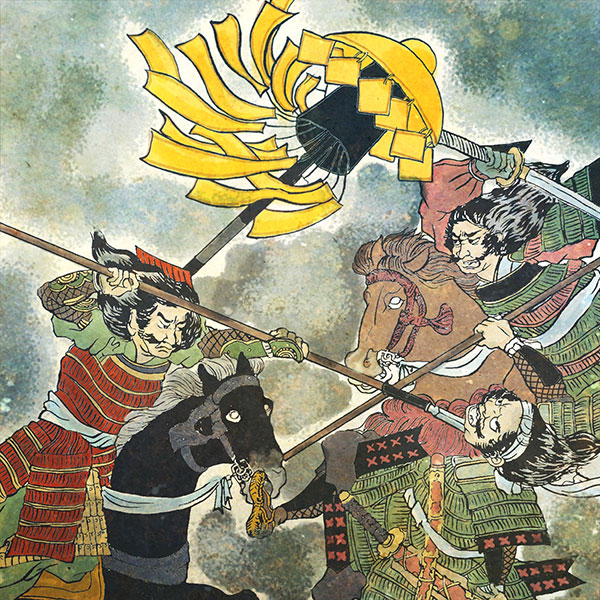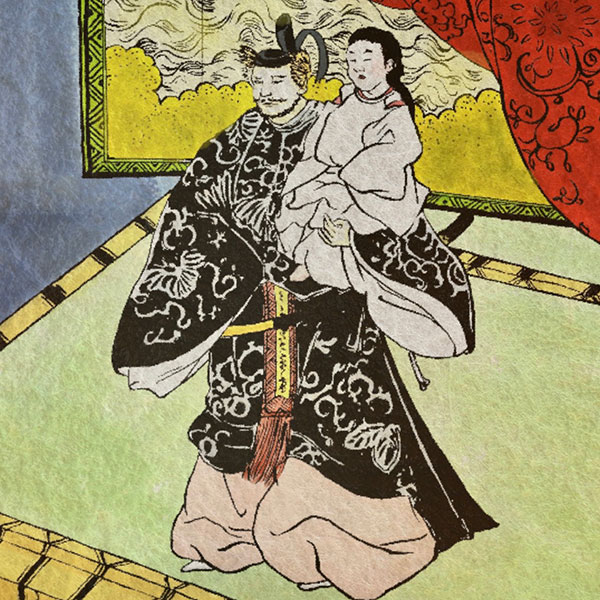Tsuneoki Ikeda (2/2)Oda Nobunaga's foster brother
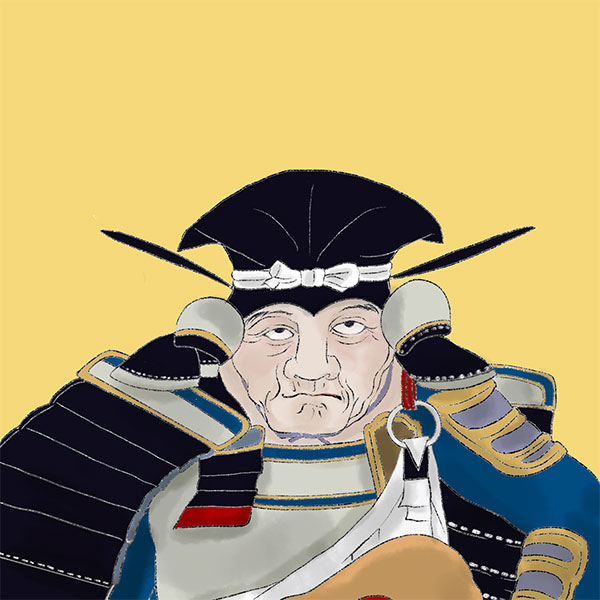
Tsuneoki Ikeda
- Article category
- biography
- name
- Tsuneoki Ikeda (1536-1584)
- place of birth
- Aichi prefecture
- Related castles, temples and shrines

Inuyama Castle
National treasure tower
Ogaki Castle
- related incident
After Hideyoshi's death, he sided with the Tokugawa in the Battle of Sekigahara, and after the war he was awarded 520,000 koku of land in Harima as a reward. He became the lord of Himeji domain and is known for carrying out the large-scale renovations to Himeji Castle that remain to this day.
In 1603 (Keicho 8), Terumasa's second son, Tadatsugu, was given 280,000 koku in Bizen under the supervision of his brother Toshitaka, and became the lord of Okayama Domain. Furthermore, in 1610 (Keicho 15), Terumasa's third son, Tadao, was given 63,000 koku in the entire Awaji Province and became the lord of Sumoto Domain. When Terumasa died in 1613 (Keicho 18), his eldest son, Toshitaka, inherited his Harima fief, which was then divided up into 100,000 koku for his younger brother, Tadatsugu. As a result, Tadatsugu's fief became the Bizen Okayama Domain with 380,000 koku. In addition, Ikeda Nagayoshi (Terumasa's younger brother) held 60,000 koku in Tottori.
After Toshitaka's death, his eldest son Mitsumasa was transferred from 420,000 koku in Harima Himeji to 320,000 koku in Inaba and Hoki provinces as he was still a child, and became the lord of Tottori. Nagayoshi's eldest son Nagayuki was transferred from Tottori to Bitchu Matsuyama (he was abolished during the time of Nagatsune, and Naganobu became a hatamoto with 1,000 koku in Ibara).
After Tadatsugu's death, his younger brother Tadao succeeded him as head of the Bizen family and was given 315,200 koku of land in Okayama (reduced by division and two abolitions of the Ako domain), while the 63,000 koku of land in Awaji was confiscated. However, after Tadao's death, his eldest son Mitsunaka was replaced by Mitsumasa of the Tottori domain, as he was still a child. From then on, the Mitsumasa line inherited the Okayama domain, and the Mitsunaka line inherited the Tottori domain.
Ikeda Shigemasa, the lord of Okayama Domain during the late Edo period, advocated "Respect for the Emperor and the Power of Hegemony" and worked hard to mediate national affairs between the Imperial Court, the Shogunate, and the Choshu Domain. However, when Tokugawa Yoshinobu, Shigemasa's older brother, became Shogun, he was unable to take the plunge and instead replaced the lord of the branch domain, Kamogata Domain's lord Akimasa, with him as the lord, and joined the Seito Army. The Tottori Domain also had difficulty unifying its domain's views because they had adopted Yoshinobu's younger brother, Ikeda Yoshinobu, but they joined the Imperial army during the Boshin War and welcomed the Meiji Restoration. Even after that, the Ikeda family seems to have continued to exist as a member of the nobility.
Inuyama Castle
Inuyama Castle was located in Inuyama (Inuyama City, Aichi Prefecture (formerly Niwa County)), on the south bank of the Kiso River, on the border between Owari and Mino provinces. Only the castle tower remains today, and it is one of the 12 surviving castle towers built before the Edo period.
In addition, it is one of five castles whose castle towers have been designated as national treasures (the others are Himeji Castle, Matsumoto Castle, Hikone Castle, and Matsue Castle). The ruins of the castle, known as the "Inuyama Castle Ruins," are designated as a national historic site.
It is also known as the last privately owned castle in Japan (it remained privately owned until 2004).
It is a flatland castle built on a hill about 88 meters high along the Kiso River. Its other name, Baidi Castle, is said to have been given by Ogyu Sorai in reference to the castle's appearance on a hill along the Kiso River, in reference to Li Bai's poem "Early Establishment of Baidi Castle" (Early Establishment of Baidi Castle), which describes the castle's location on a hill along the Yangtze River.
It was originally a fort of the Iwakura Oda clan, but was later renovated and built by Oda Nobunaga's uncle, Oda Nobuyasu. Later, Ikeda Tsuneoki and Oda Katsunaga entered the castle, and during the Toyotomi administration, Ishikawa Sadakiyo (Mitsuyoshi) renovated it to its current shape. It also served as an important base for the Western Army in the Battles of Komaki and Nagakute and Sekigahara.
During the Edo period, Hiraiwa Chikichi, a retainer of the Owari clan, entered the castle, and from Naruse Masashige onwards, nine generations of the Naruse clan ruled the castle as their lord until the Meiji period. There are several theories about when the current castle tower was built, including the Tenbun period and the Keicho period, but it was renovated by Naruse Masashige around 1617 (Genwa 3) that it took on its current appearance.
Until the end of March 2004, it was the only privately owned castle in Japan, but on April 1 of the same year, it was transferred to the Inuyama Castle Hakutei Bunko Foundation (now a public interest incorporated foundation). On April 6, 2006, it was selected as one of Japan's 100 Great Castles (number 43). Inuyama City is also planning to survey and restore lost structures, including wooden reconstructions, stone walls, moats, and earthworks.
Hyogo Castle
Hyogo Castle was a castle located in the area around Nakanoshima in Hyogo Ward, Kobe City, Hyogo Prefecture (Hyogo-tsu, Yabe District, Settsu Province). During the Amagasaki Domain era, it was called Hyogo Jin'ya and a magistrate was stationed there, and during the Meiji era, the Hyogo Prefectural Office was located there.
To the west of Kobe Port is a port called Hyogo Port. Hyogo Port is the site of Hyogo Port, which flourished as a good port until the Edo period, and is also home to Fukuhara-kyo, where Taira no Kiyomori moved his capital.
During the Nanboku-cho period, it was a center of battles, and with the Sanyo Road running through it to the north, it was a distribution center for land and sea goods and a key transportation hub.
Hyogo Castle only functioned as a castle for a short period during the Sengoku period, and became a jin'ya (camp) during the Edo period. Unfortunately, the remains of the jin'ya were lost due to large-scale renovations of Hyogo Port after the Meiji period and urbanization in modern times, and no trace of its former appearance remains today.
Ogaki Castle
Ogaki Castle is a Japanese castle (flat castle) located in Ogaki City, Gifu Prefecture. It is also called Bijo Castle or Kyorokujo Castle.
It is said to have been built by Miyagawa Yasusada (Yasuda), but the actual construction date and person behind it are unknown. At the time it was built by the Miyagawa clan, it is said to have been a simple structure consisting of only the main and second enclosures, and the Ushiya River was used as an outer moat.
During the Sengoku period, Ujiie Naomoto carried out extensive renovations and developed it into a fully-fledged castle.
Ito Sukemori added a four-tiered, four-storey castle tower, Ishikawa added a moat, and Hisamatsu Matsudaira renovated the castle tower. In 1649 (Keian 2), Toda Ujikane renovated the castle, resulting in the castle tower remaining in its original form until the Meiji period.
The castle was abandoned due to the castle abolition order issued in 1873 (Meiji 6), but some buildings such as the castle tower escaped demolition and were designated as national treasures (former national treasures) in 1936 (Showa 11). However, the castle tower, Gon-yagura tower, and other buildings were burned down during the Ogaki air raid on July 29, 1945 (Showa 20).
The castle tower was restored in 1959 (Showa 34), and the Inui Tower in 1967 (Showa 42) with a reinforced concrete structure based on Gujo Hachiman Castle, but some modifications were made, such as enlarging the windows for tourism purposes. In August 2008, a citizens' review committee proposed a wooden reconstruction to Ogaki City.
In 2005, Ogaki City launched a plan called the "Ogaki Castle Development Dream Concept" to restore the castle to its former state, stating that after the war, the main moat was filled in except for the main moat, which remains as the Suimon River and irrigation channel, and that unplanned development had caused the castle to be hidden from the main roads and Ogaki Station by buildings taller than the castle tower. Since 2006, the city has met frequently to consider the plan, but the reality is that the plan has not been realized.
In 2006, the designated manager system was introduced and the Ogaki City Cultural Foundation, a public interest incorporated foundation, began managing and operating the facility. However, in April 2019, the designated manager system was abolished and the facility was returned to being directly managed by Ogaki City.
On February 22, 2011, the roof tiles were replaced and the exterior walls were repaired. This work restored the appearance of the castle, which had been altered during the postwar reconstruction, to its original appearance before the fire, based on historical documents. On April 6, 2017, the castle was selected as one of the 100 Most Famous Castles of Japan (No. 144).
Rereading the article on Tsuneoki Ikeda
- related incident

- WriterTomoyo Hazuki(Writer)I have loved history and geography since my student days, and have enjoyed visiting historical sites, temples and shrines, and researching ancient documents. He is especially strong in medieval Japanese history and European history in world history, and has read a wide range of things, including primary sources and historical entertainment novels. There are so many favorite military commanders and castles that I can't name them, but I especially like Hisashi Matsunaga and Mitsuhide Akechi, and when it comes to castles, I like Hikone Castle and Fushimi Castle. Once you start talking about the lives of warlords and the history of castles, there's a side of you that can't stop talking about them.



